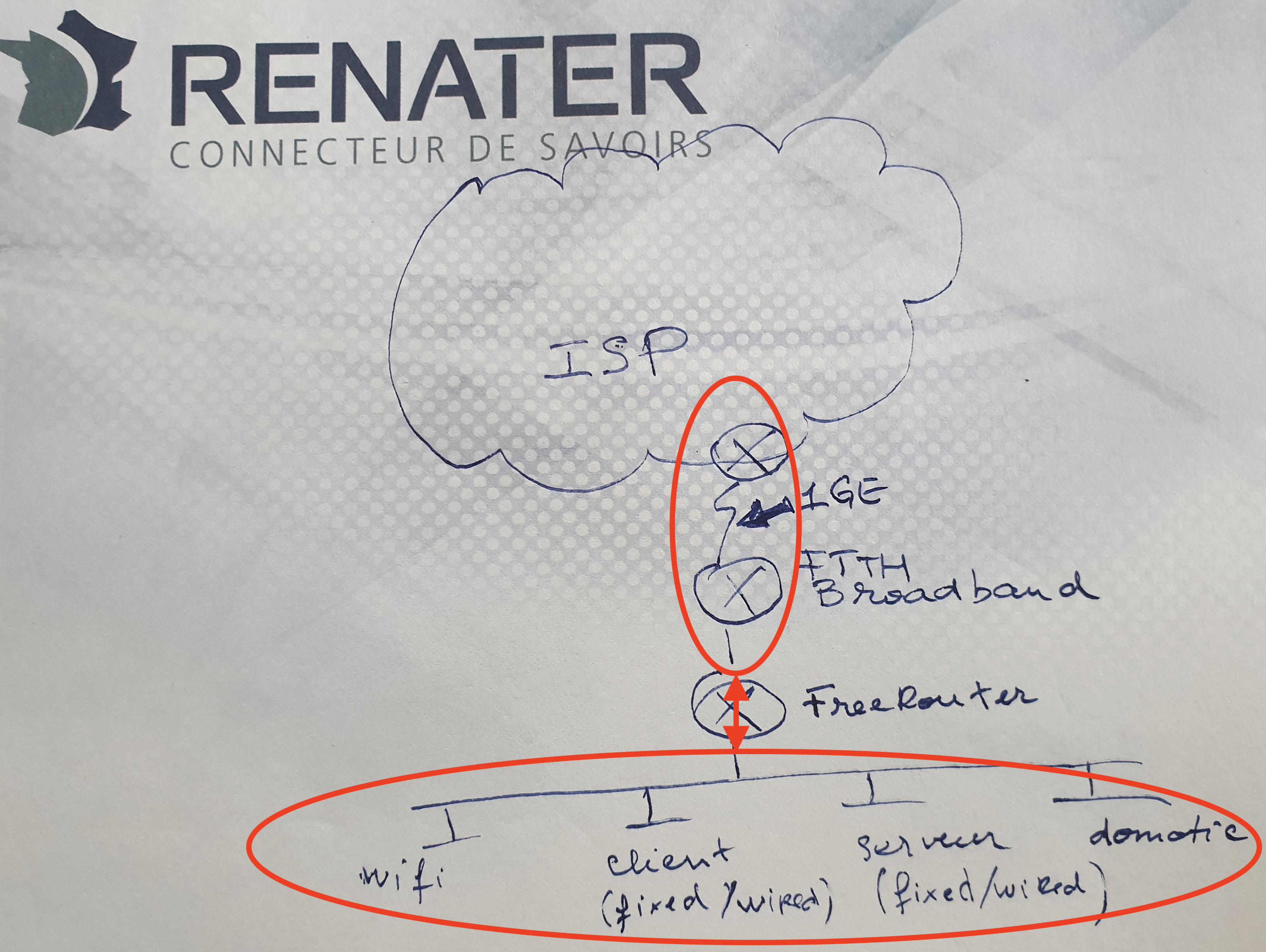Requirement
|
Overview
In the previous article we enabled and checked IPv4 connectivity between all potential host within 192.168.128.0/17 and the outside Networks beyond ISP box. But, this is pretty useless as I can't imagine my kids typing IPv6 address (2001:8b0:0:30::666:102) in the browser in order to play a FUN puzzle. So we definitely need to provide name service resolution at the SOHO router itself.
Article objective
In this article we will pursue the SOHO network appliance installation and enable name service to all host @ home.
Diagrams
[ SOHO #005 ] - "Got your Id number, but ... What's your name ?"
Verification
Conclusion
In this article
- We finally have a router that enables connectivity for all hosts inside the home network to the outside world
- due to the ISP specific setup, our router had to translate inner home IP subnets to subnet that can be in turn NAT'ed by the ISP box.
- We have a consistent IPv4 addressing plan
- We now can add very exciting feature from now on. (In next articles !)
RARE validated design: [ SOHO #004 ] - key take-away
In this example we are proposing a basic connectivity scenario. However, keep in mind that depending on your location the configuration might be drastically different. But do not fear ! RARE/freeRouter has all the features need to enable connectivity !
- NAT64 is available. So in case you want to run a pure IPv6 network, freeRouter can NAT64 traffic for you.
- NAT46 is also available. In case you are desperate and don't want to implement a pure IPv6 home network and have an ISP running only IPv6, freeRouter can NAT46 your traffic for you !
- In the example described, we are lucky to have IPv6 public global IPv6 address. We will see IPv6 configuration in subsequent articles.

